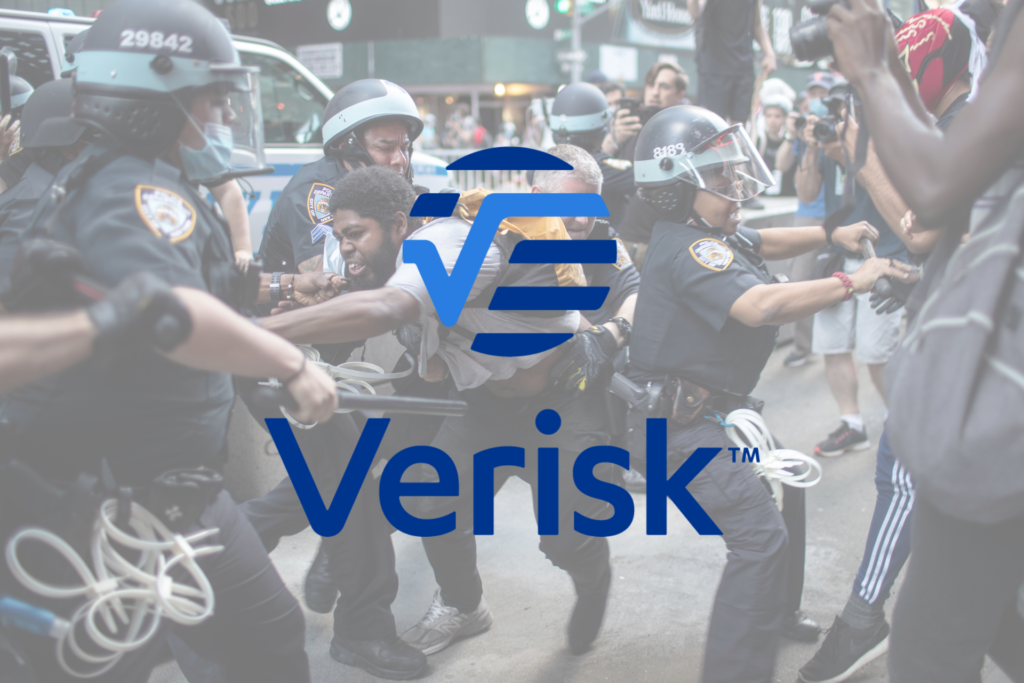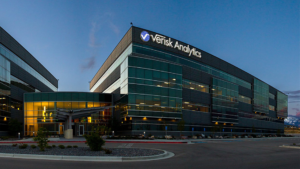Developed for political violence insurers, Verisk Maplecroft’s new SRCC (strikes, riots and civil commotion) Predictive Model provides 12-month forecasts on the risk of severe protests that could result in insured losses occurring in 50,000 counties and districts globally.
The machine learning model validates its predictions against actual insured losses and draws on geospatial data covering the size of recent protests, concentrations of economic value, demographics, and a range of political risk, climate and socio-economic indicators.
Globally, data from the model shows that risks continue to escalate. With the exception of the Middle East and North Africa, SRCC risks have worsened in all regions over the past two years.
While the US has been spared the worst of the economic hardship that has stoked discontent in much of the world, high levels income inequality mean that many US urban hubs could face an elevated risk of unrest in the next year. The November 2024 election may also be a spark that ignites the US’s underlying SRCC risk factors.
Significantly, the granularity of the data pinpoints the districts within cities where the risks are highest. Notably, central districts often pose higher risks than city suburbs.
Looking at the US cities with a population over a million, 33 are rated high risk on the model. These include top ranked New York City, along with Washington DC, Philadelphia and LA, leaving political violence insurers with a higher exposure to potential losses in these locations compared to other urban hubs.
“The next 12 months could be challenging for political violence insurance providers in the US, which performs markedly worse in core risk drivers than peer regions such as Europe,” says Principal MENA Analyst Torbjorn Soltvedt. “The need for granular, forward-looking data is more pressing than ever – our SRCC Predictive Model offers insurers an entirely new approach to how they assess and price these risks.”
85% of major US cities face ‘high’ SRCC risks in next 12 months
The protests sparked by the death of George Floyd in 2020, which resulted in $2.5bn to $3bn in insured losses, serve as a reminder that damaging bouts of unrest are no longer limited to territories which have traditionally been deemed politically unstable. Indeed, when honing in on the 100 highest risk cities within the 10 largest global insurance markets, India dominates followed by the US, with 61 and 38 cities respectively. Canada’s Montreal is the only other to feature.
Unsurprisingly, these US cities are headed by the country’s major metropoles, but several smaller cities – including Louisville, Milwaukee and Memphis – are rated high risk on the model. It is a similar story in several of the US’s fastest growing urban centres, including Austin, Nashville and Raleigh. All told, cities from some 22 US states fall into the high risk category of the model.
No region free from SRCC risks
Zooming out to the full list of 561 global cities with a population over a million shows that insurers are widely exposed to losses linked to unrest in key metropoles in most regions. The 10 highest risk cities globally include Beirut, Johannesburg, Dhaka, Kolkata, Cape Town, Mexico City, Chennai, Sao Paulo, Mumbai and Hyderabad.
SRCC risks run high in major global urban hubs
As is the case in the US, a combination of high population density and concentrated economic value means that SRCC risks run higher in these urban hubs than in less developed areas. But what sets these higher risk metropoles apart from those at the lower end of the rankings is their poor performance on several of the indicators underpinning the SRCC model, such as higher rates of income inequality, unemployment, and the size of recent protests.
Cutting-edge analytics key to navigating fast-moving political violence landscape
Data from Verisk Maplecroft’s SRCC Predictive Model underscores the complex challenges facing political violence insurance providers. Socioeconomic tensions driven by persistently high living costs present the most immediate threat to the world’s major urban hubs in the next 12 months. In the longer term, increasing rural-to-urban migration, rising inequality and the impacts of the escalating climate crisis are just a few of the myriad interconnected issues that could threaten to inflame unrest in these cities in the coming years.
“As these dynamics combine to fuel a rise in SRCC risks globally, already high levels of demand for political violence insurance will rise further,” adds Soltvedt. “Against this backdrop, close collaboration with providers of political risk analytics will become increasingly vital for insurers looking to better understand SRCC risks across countries, regions and cities as they evolve.”








